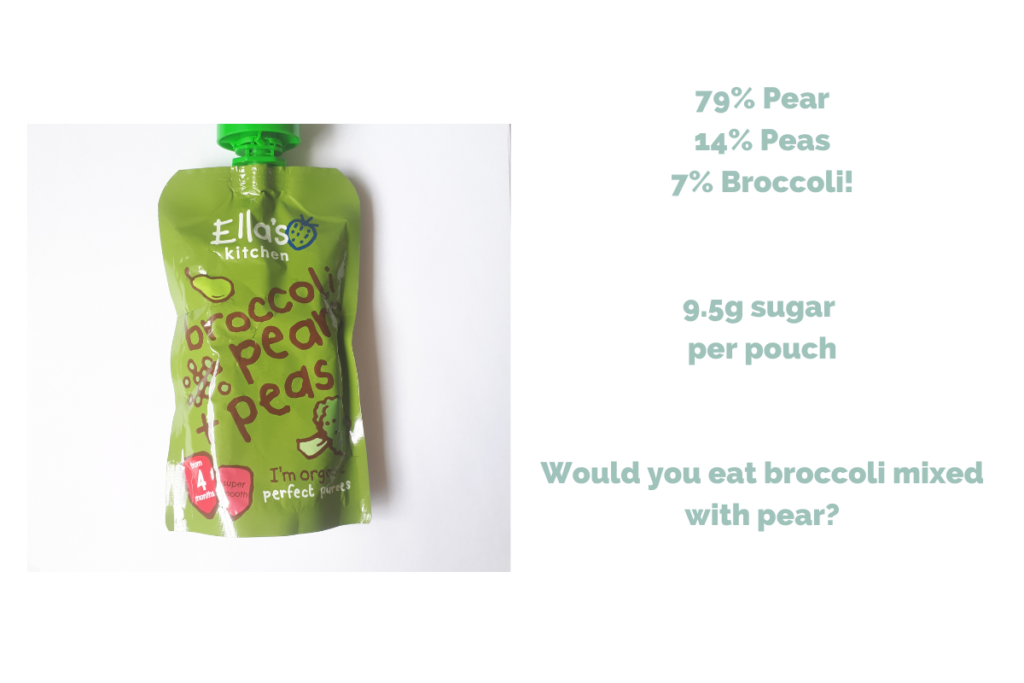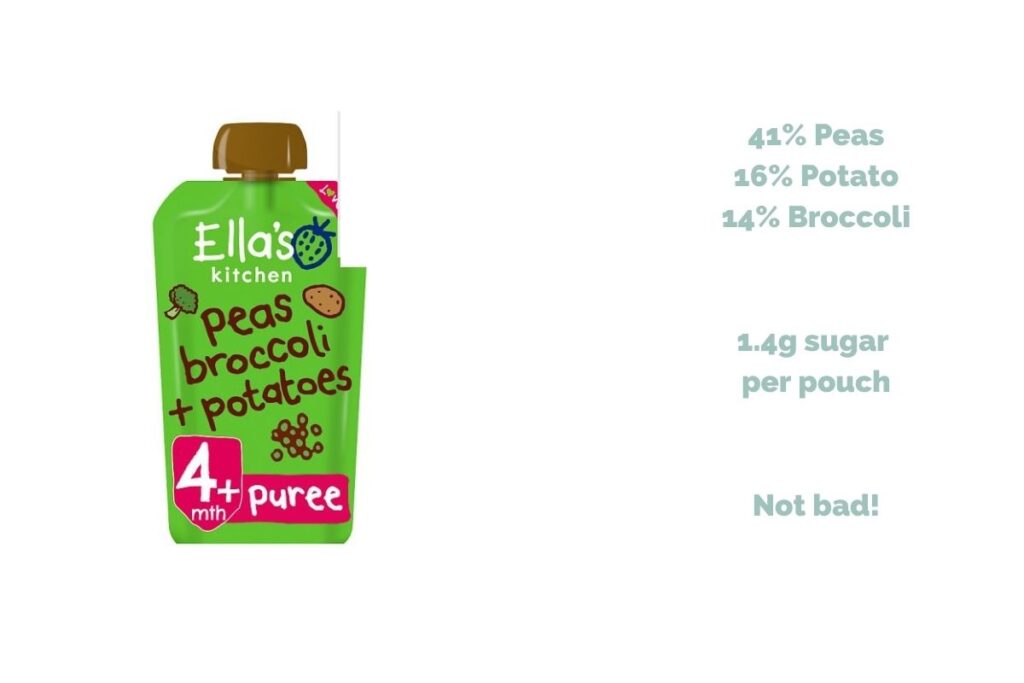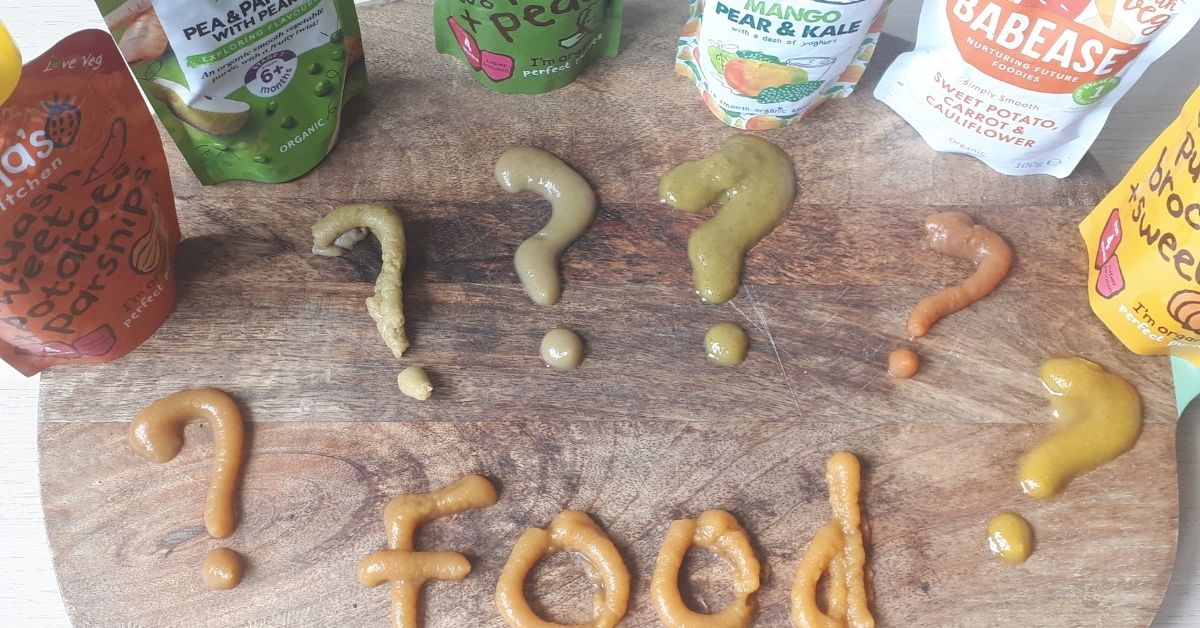Colourful. Convenient. Confusing! Are baby food pouches healthy for your little one?
The choice of baby food pouches is mind-boggling!
Head into any major supermarket, and you’ll find at least one full aisle of baby food pouches, snacks, ready meals, boxed food and drinks. So how are you to know which ones to choose?
Encouraging claims like no added sugar! Organic. No nasties. What does it all mean?
The pros and cons of using shop-bought baby food?
What’s good about them? They’re:
- Convenient
- Easy to store
- Handy when travelling or out and about
- Long shelf life
- Time-saving
What’s bad about them? They’re:
- Inauthentic colour, taste and texture
- Sweeter with more ‘free sugar.’
- Few single vegetable flavours available
- Few bitter tasting ‘greens’ vegetable flavours available
- More expensive than homemade
- Misleading labels
- Some nutrients may be destroyed during processing.
Remember what weaning your baby is ALL about!
First Steps Nutrition Trust describes early childhood as a critical time for establishing food preferences. The tastes infants are exposed to at an early age have long-lasting effects on their liking of specific tastes.
How do baby pouches fit in with this?
Let’s take a closer look at some baby food pouches.
Misleading labels
I’m using Ella’s Kitchen as an example here because it’s the one that parents most commonly mention. But the same rules apply across all of the product ranges.
Are you surprised that broccoli is listed first? Listing broccoli first fools us into thinking our baby is eating broccoli. But it makes up only a tiny proportion of the total content so unlikely to instil a future love of this green veggie!

Baby food pouches can be high in ‘free sugars’
This can be tricky to wrap your head around! But, I’ll try to make it as simple as possible.
- All fruits (and some sweet vegetables like sweet potato, carrots and parsnips) contain natural sugar. This sugar is intact within the structure of the fruit.
- When fruits (or vegetables) are processed (heated and blended), the sugar is ‘released’. Not it’s what’s known as ‘free sugar’.
- A high ‘free sugar’ intake in children is linked with dental decay and obesity.
- The WHO (World Health Organisation) recommends that children under four eat as little ‘free sugar’ as possible.
- The pouch of ‘Broccoli, Pears and Peas’ contains 9.5g sugar. This is ‘free sugar’ just like sugar, honey, maple syrup or fruit juice.
- Labelling on pouches is misleading. The manufacturer may claim that there’s ‘no added sugar’. But that doesn’t mean that there’s no ‘free sugar’.
READ MORE >>> Sugar and your baby
Is there as much sugar in homemade fruit purée as shop-bought baby purée?
If you purée fruit at home, you may release some free sugar, but it’s unlikely that’s you’ll be able to blend it as smoothly as the manufacturers so it might contain a little less. But, if you mash the fruit, most of the sugar remains intact. If you offer the fruit as finger food, then all of the sugar will be intact.
Do you need more help with offering fruit as finger food? You’ll find some safety tips here.
Check out Solid Start’s online Baby Weaning Course. Ready, Steady, Wean will take you from confused to confident in no time at all.
You can choose baby food pouches with less ‘free sugar.’
As you can see here, even within the same brand, there are combinations with less free sugar. You just need to read the label to find out for yourself!

Baby food pouches can contain some bizarre combinations.
Do you think that in a year or two’s time you’ll be serving a Sunday roast chicken with potatoes and a side of plum, pear, parsnip and swede? I’d say not. So why offer it to your baby now?!
6 ways to use baby food pouches wisely.
You don’t need to use pouches. There are many ways to feed your baby when out and about or on holidays that don’t involve pouches. And for everyday feeding, it’s much better to offer your baby modified versions of your family foods. However, there’s nothing wrong with using them from time to time.
- Don’t rely on them too often.
- Don’t feel guilty for using them occasionally!
- Choose pouches with less than 5g of sugar per pouch.
- Choose single flavours in the early days of vegetable-first weaning.
- Choose products with higher meat, fish, bean or lentil content once you’re past the first few weeks of weaning. Most contain about 10%, but you will find some brands like Babease, which have about 20%.
- Squeeze the contents into a bowl and feed off a spoon. At least this way your baby can see what they’re eating.








0 Comments